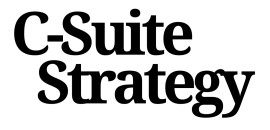Understanding Business Energy Dynamics
Grasping the Dynamics of Business Energy
Understanding the ebb and flow of energy within business operations is crucial for strategic success. At the core, the concept of business energy encompasses how power, in the form of electricity, fuels the intricate activities within an organization. This dynamic nature of energy consumption demands attention, particularly in today's era where balancing energy becomes crucial for business owners. The energy system within any organization acts like a grid, connecting various components such as products, services, and customer interactions. Energy transitions, from traditional to renewable sources, significantly impact the energy supply and necessitate careful consideration of energy efficiency and sustainability. To decipher these dynamics, businesses must ponder the following:- Energy Sources: Understanding the mix of traditional and renewable energies that power your organization.
- Energy Impact: Recognizing how energy supply affects corporate strategy and customer satisfaction.
- Energy Generation: Identifying the methods and technologies used to generate energy within your operation.
Identifying Energy Drains and Boosters
Pinpointing the Origins of Energy Inefficiency and Potential
In the pursuit of strategic success, understanding where your business might be losing or gaining energy is crucial. The concept of corporate energy goes beyond the simple consumption of electricity; it's about how your business operates with regard to energy supply and usage. An effective strategy involves identifying both energy drains and energy boosters and how they interplay within the business energy system.- Energy Drains: Common culprits include outdated infrastructure, inefficient processes, and high energy-consuming products or services. Businesses need to assess the impact of these drains on their energy balance and address them to prevent long-term inefficiencies.
- Energy Boosters: On the flip side, renewable energy sources and low carbon technologies can serve as powerful boosters. They not only optimize energy use but align with a global transition towards sustainable practices, benefiting both the national grid and corporate sustainability goals.
Strategies for Energy Optimization
Unleashing Energy Potential in Business
In the interconnected world of business, optimizing energy consumption stands as a pivotal strategy for enhancing corporate performance and sustainability. The power balance within your energy system should harmonize with your company’s operational needs and environmental goals. By adopting effective strategies, business owners can align their energy dynamics with their broader strategic objectives.
To begin optimizing energy within your organization, consider shifting towards low-carbon energy sources that align with global trends in renewable energy. This not only supports long-term sustainability but also helps in reducing costs associated with energy supply. Efficient energy management is crucial in maintaining the balance between energy consumption and generation, which can ultimately impact the reliability of your corporate services.
- Energy Efficiency Initiatives: Implement measures that boost energy efficiency across your operations. Retrofitting facilities with energy-saving products or integrating smart grid technologies can significantly reduce power consumption and lower electricity costs.
- Collaboration with the National Grid: Work closely with energy providers and the national grid to ensure a reliable and flexible energy supply. Collaborating on balancing services can enhance your company's ability to manage fluctuations in energy demand and supply effectively.
- Diversifying Energy Supply: Incorporate a mix of renewable and traditional energy sources to create a resilient energy system. This balanced approach ensures a consistent energy supply while mitigating risks associated with over-reliance on a single energy source.
The energy transition is not merely about shifting from one source to another; it entails a holistic transformation of corporate strategies to meet sustainability goals. By optimizing energy use, companies can improve operational efficiency, reduce environmental impact, and provide better products services to customers, aligning with modern business solutions tailored for the energy sector.
As you explore these strategies for energy optimization, remember to regularly measure and adjust your energy levels in response to evolving business conditions. This ongoing evaluation will empower your company to maintain a sustainable energy balance that aligns with both corporate ambitions and the privacy policy in place for environmental responsibility.
Leveraging Technology for Energy Efficiency
Embracing Technological Innovations for Energy Optimization
As businesses endeavor to maintain a delicate balance of energy supply and demand, leveraging technology has become a linchpin in achieving energy efficiency. The energy landscape has been transformed with the advent of modern technologies, enabling businesses to handle energy resources with more precision and efficacy.The integration of smart grids is one such innovation, facilitating real-time data exchange between energy consumers and providers. Enhanced communication channels allow businesses to track their power consumption patterns while optimizing electricity usage to minimize waste. Smart grids also pave the way for adaptive measures, such as demand response strategies, that help in sustaining the equilibrium of energy supply and demand.
Furthermore, renewable energy sources are gaining prominence in business energy management. The transition towards low-carbon energy solutions not only aligns with corporate sustainability goals but also mitigates the impact of fluctuating energy prices. Solar panels, wind turbines, and other renewable installations are becoming increasingly accessible for businesses, offering a viable route to reduce reliance on traditional power providers.
Energy management software solutions provide business owners with a centralized platform to monitor and adjust energy consumption effectively. These tools offer insights into energy drains and boosters previously discussed, allowing for more informed decision-making. By integrating various data points, from electricity usage to grid behavior, companies can develop nuanced strategies for a sustainable energy system.
Incorporating AI and machine learning further augments businesses' capacity to predict energy usage trends. These technologies enable the forecasting of energy demand, thereby ensuring that sufficient resources are available during peak periods. With predictive analytics, businesses can harness data insights to minimize disruptions and enhance overall energy efficiency.
In conclusion, the rapid pace of technological advancement presents numerous opportunities for businesses to refine their approach to energy management. By strategically implementing the right technology, companies can achieve a synergistic balance of energy resources, ultimately fostering long-term sustainability and operational resilience. Investing in cutting-edge solutions not only strengthens energy efficiency but also empowers organizations to meet the evolving needs of their customers.
Case Studies: Successful Energy Balancing
Real-World Applications of Business Energy Balancing
In examining how energy balancing contributes to strategic success, it's essential to look at real-life instances where businesses have successfully harnessed their power resources. This not only aids in understanding the dynamics involved, as previously discussed, but also provides a blueprint for implementing similar strategies. 1. Energy Efficiency in Corporate Practices Many corporations have transitioned to incorporating renewable energy sources within their energy system, leading to significant shifts in how energy is utilized and managed. This not only includes integrating solar panels and wind turbines into their infrastructure but also making use of energy-efficient products and services. 2. Streamlining Energy Supply Chains Some businesses optimize their energy use by aligning their supply chain operations with national grid regulations, reducing dependency on traditional power sources. This alignment with the grid ensures a steady and reliable energy supply, while also fostering a strong partnership with energy suppliers. 3. Implementing Balancing Services There are corporate entities providing balancing services to ensure that energy consumption does not surpass energy generation, thereby avoiding potential downtime and reducing waste. This dynamic adjustment reflects the company's commitment to long-term operational efficiency. 4. Focus on Low Carbon Initiatives Balancing energy by shifting towards low carbon alternatives has had a significant impact on reducing the carbon footprint of businesses. Companies focusing on low carbon energy solutions often see an improvement in their public image, which resonates well with environmentally conscious customers. These case studies demonstrate that energy efficiency is not merely a component of operational strategy but a core element of broader business solutions. Through understanding these applications, business owners can better tailor their energy strategies to fit their unique contexts, ensuring future resilience and success in an ever-evolving energy landscape.Measuring and Adjusting Energy Levels
Evaluating and Modifying Energy Dynamics
For a business to thrive, consistently reviewing the dynamics of its energy supply and demand is crucial. Measuring energy levels across your operations aids in maintaining an optimal balance—mitigating energy drains while maximizing boosters.
A stable power grid is foundational to your company’s success. Establishing metrics for analyzing business energy systems helps in identifying inefficiencies. By closely monitoring your electricity consumption and the impact of your energy use, you can implement effective business solutions to optimize your operations.
Balancing services play a key role in ensuring a steady energy supply, crucial for adapting to demand fluctuations. Engaging with the national grid and leveraging technology provides a competitive edge. This includes using renewable energy sources which not only ensure sustainability but also reflect positively on your corporate image, aligning with energy transition goals towards a low carbon future.
Regular analysis and adjustment of energy levels allows business owners to make informed decisions rooted in data. Using smart meters and real-time monitoring solutions, businesses can integrate these insights into their energy efficiency strategies. By maintaining an adaptable energy policy, businesses can meet both current needs and long-term objectives, serving their customers effectively.











-large-teaser.webp)


